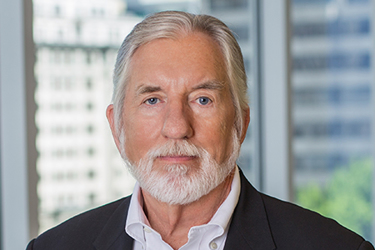COVID, Drug Pricing, And Patents
By Terry Mahn

With several COVID-19 vaccines on the near horizon, dozens still in clinical trials, and governmental pre-orders already in the hundreds of millions, all eyes have turned to pricing. With a pandemic raging, it is arguably not the best time to trust the “invisible hand of competition” to set fair prices for patients or reasonable returns for investors. Because patents are thought to underpin the calculus of drug pricing, they are once again the focus of opponents and would-be reformers.
The patent target is easy when they are the source of market-disorienting behaviors such as “pay-for-delay” deals with competitors or the accumulation of “patent thickets” to stifle competition. But what about the staggering cost of new drug development? Or the FDA’s antiquated policies that stifle new investments in proven drugs and Congress’s unintended misstep with the 2011 America Invents Act (AIA), which all but declared “open season” on drug patents? And then there are the recent Supreme Court decisions limiting patent coverage for discoveries in the field of precision medicine. All these efforts undercut drug innovation by increasing the risk of patent protection; and with increased risk comes the need for higher prices for new drugs.
A 2014 Tufts University study (the most recent) found that the average cost of bringing a new drug to market exceeded $2.4 billion; and industry studies show that between nine and 14 years of patent life are lost in the process. With patent protection capped at 20 years, it means new drugs experience only a modest “shelf life” before generic competition sets in and prices plummet. Yet, U.S. patent protection is the single most important driver of drug discovery and medical innovation worldwide. Thus, any capping of U.S. drug prices could impact new investment and further compound the problem.
Drug patents are the ongoing target of “micro-aggressions” by all branches of the federal government. For example, the FDA’s generic drug approval policies undermine brand patents by officially “rating” generics not labeled for patented uses (and hence not infringing) as automatically “substitutable” for the brand. This sanctions pharmacies throughout the country to fill on-label prescriptions with “off-label” drugs without most doctors even knowing about it. Not only does the FDA’s rating policy discourage brands from further investing in their safe and proven medicines, but it can lead to senseless lost opportunities to advance public health.
The anti-inflammation drug Enbrel is a recent case in point. Last year, the Washington Post disclosed the existence of an internal 2015 study that appeared to show Enbrel’s remarkable “side effect” of reducing the risk of Alzheimer’s by up to 64%. However, despite the possibility of a blockbuster breakthrough in one of the most intractable and heartbreaking diseases known to man, clinical studies were never pursued. Why? Perhaps it was because Enbrel was about to face competition from a new, generic-like drug called a “biosimilar” that could be substitutable for Enbrel at a fraction of the cost. Thus, even if the Alzheimer’s discovery was patentable, the new investment in Enbrel would be stranded once a much cheaper “off-label” biosimilar was available for substitution. To management, a new Alzheimer’s indication for Enbrel probably looked like a money loser.
Congress also has played a role in undermining drug patents, albeit unwittingly, with the AIA’s passage. Before AIA, drug patent litigation almost always took place after a generic manufacturer committed the resources for market entry, but before the FDA gave permission to launch. That was the governing principal of Hatch-Waxman: to challenge a brand patent, the generic was required to have “skin in the game.” The AIA changed that by creating a new mechanism for challenging patents through trial-like proceedings before the U.S. Patent Office, known as an inter partes review (IPR). Now anyone, from generic manufacturers to hedge funds to public interest groups can quickly and cheaply attack any drug patent without having to go to court. While this wasn’t what Congress intended, nearly 400 drug IPRs have been instituted over the past six years that have forever tilted the Hatch-Waxman balance against brand manufacturers.
Finally, the courts have played a role in limiting patent protection for medical discoveries. In 2012, the Supreme Court ruled in Mayo v. Prometheus that diagnostic tests that merely identify diseases or genetic conditions are observations of “natural phenomenon” and thus, not patentable; and the next year, in Assoc. of Molecular Pathology v. Myriad, the Court ruled that isolated gene discoveries also cannot be patented because they involve “laws of nature.” These rulings dealt a blow to the emerging field of precision medicine, where rigorous patient genotyping is key to improved healthcare. With patent protection unavailable for diagnostic testing for a novel disease like COVID-19 and biomarker discoveries to develop effective vaccines, drug manufacturers have little incentive to invest in these critical, future technologies.
When it comes to stimulating medical innovations there is no substitute for patent protection. Studies have shown that the nonprofit business model is inadequate to supply the drug pipeline the public demands. Thus, any Congressional tinkering with private sector drug pricing must ensure that “first, it does no harm” to the patent system.
Terry Mahn is head of the Regulatory and Government Affairs Practice at Fish & Richardson in Washington D.C. He can be reached at mahn@fr.com.
The opinions expressed are those of the authors on the date noted above and do not necessarily reflect the views of Fish & Richardson P.C., any other of its lawyers, its clients, or any of its or their respective affiliates. This article is for general information purposes only and is not intended to be and should not be taken as legal advice. No attorney-client relationship is formed.
